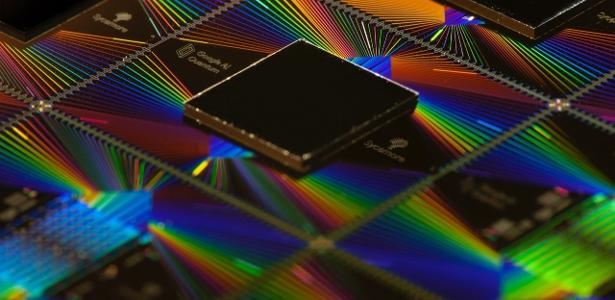
According to a recently published survey, the quantum computer of Google was used to create “time crystals”: a new state of matter that defies the laws of thermodynamics. Despite the name, it has nothing to do with time travel – as fans of the Dev or Avengers series might think – but with movement.
For almost a decade, scientists have perfected these crystals. They are systems that work continuously, even out of balance. Unlike other forms of matter, its atoms are constantly evolving.
But it was never possible to prove that they could exist in the real world. New research developed by Google and researchers from Princeton and Stanford universities says it has achieved what seemed impossible.
The study was presented this week., as a pre-publication – that is, before it is officially published, it will still go through the peer review phase. Therefore, it can still be changed or even refuted.
What is a Time Crystal?
First, we need to understand what a crystal is for physics: an object with atoms forming a sequential network with repeating patterns (as opposed to a liquid, for example, in which the molecules are unevenly distributed). Organized to make. They are highly organized structures, like grains of salt or ice.
Now think of a crystal whose pattern does not repeat every specified distance, but every specified amount of time. He will be the crystal of time. It is like a heart beating continuously, without expending energy – breaking the second law of thermodynamics.
Momentum does not arise from stored energy, but from the breaking of symmetry in the fluid. The concept was proposed in 2012 by American physicist Frank Wilczek, winner of the Nobel Prize in Physics.
A time crystal is basically composed of three main elements: first, a line of particles, each with its own magnetic orientation, trapped in a mixture of different energy configurations. This is known as the “many body problem”.
Then, the orientations of these particles are reversed, creating a mirror version of each. Finally, there is the application of laser light, thereby switching states – from normal to reflected and back and forth – but without using the energy of the laser itself. The result, known as the time crystal of floquat, was proposed in 2016.
Google’s quantum computer, known as the Sycamore, used a chip with its 20 kibits, or controlled quantum particles, that can maintain two states simultaneously. By adjusting the strength of the interactions between the kibits, the researchers were able to randomize the interactions and achieve many-body positions. The microwave then reflected and “unmirrored” the particles.
and now?
It is still unclear what theoretical advances the research has achieved, or what the potential applications of time crystals are. For now, according to the researchers, this is just another demonstration of the potential of quantum computers — an innovative technology, which is still in development.
According to Wilczek, if produced, crystals would allow us to measure time and distance with extreme accuracy. They could revolutionize quantum technology, telecommunications, mining, and even understanding the universe.



